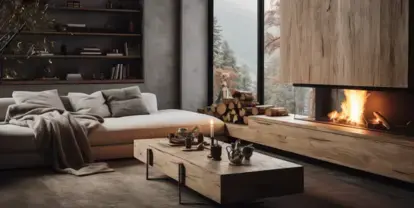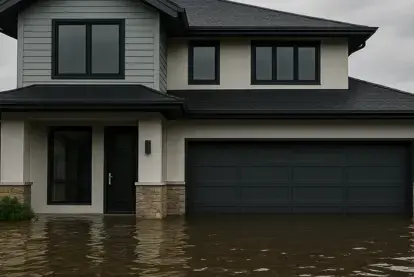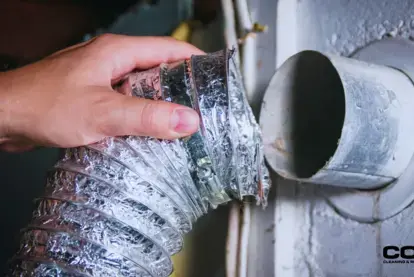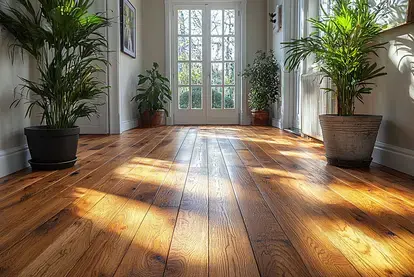
How to Choose a Fireplace for Your Home
Contact COIT for a professional cleaning!
There’s something timeless about a fireplace. Whether it’s the soft glow of flames dancing behind glass or the earthy smell of burning wood on a cold evening, a fireplace has the power to turn a house into a home. But when it comes to choosing the right one, it’s not as simple as picking the one that looks best in a showroom.
You’ll need to consider your lifestyle, your home’s layout, your budget, and even your cleaning habits. As cleaning and home care professionals, we’ve seen it all, from soot-stained chimneys to fireplaces that look beautiful but barely throw heat.
So in this guide, we’ll walk you through everything you need to know to make a smart, safe, and stylish choice.
Start With Purpose: Heat, Ambiance, or Both?
The first question to ask yourself is: What do I want this fireplace to do?
Some people want a fireplace that serves as the main heat source for their space. Others are more focused on aesthetics, like creating a cozy atmosphere for entertaining or relaxing at the end of the day. And plenty of us want both.
If heating efficiency is your top priority, look for high-performance options that distribute heat effectively. Gas and electric fireplaces tend to be the most efficient in this area, but if your main goal is ambiance, you might lean toward a traditional wood-burning fireplace or a sleek electric design that mimics the look of real flames.
Choosing your purpose upfront helps narrow your options and can save you a lot of back-and-forth later.
Know Your Options: Types of Fireplaces Explained
There are more fireplace types out there than you might expect. Let’s break down the four most common ones you’ll encounter:
Wood-Burning Fireplaces
Wood-burning fireplaces offer a traditional, crackling fire and plenty of charm. If you grew up with one, you already know the ritual—stacking logs, tending flames, and cozying up with a blanket. But keep in mind that they require a chimney, regular cleaning, and lots of upkeep. They're also less efficient than other options and can lose heat through the flue unless you install a sealed insert.
Gas Fireplaces
Gas fireplaces are convenient and clean-burning, and can be turned on with the flip of a switch. No hauling wood or cleaning up ash. They come in vented and ventless models and are available in both built-in and insert styles for a great balance of style, heat, and ease of use.
Electric Fireplaces
No chimney? No problem. Electric fireplaces can be installed almost anywhere, and while they don’t offer real flames, today’s models do a good job simulating the look. They’re also the safest option for homes with kids or pets and are a favorite for apartments or condos.
Ethanol or Gel Fireplaces
These newer styles burn clean fuel (usually alcohol-based) and don’t require a vent. They’re more about mood than heat but offer lots of design flexibility, like modern, minimalist fireplaces built into bookshelves or placed in unexpected corners.
Pro Tip: Pellet stoves and fireplace inserts are also worth exploring if you’re retrofitting an older unit or want a wood-burning option with more heat output and efficiency.
Consider Fireplace Trends for 2025
Fireplaces have evolved far beyond the classic red-brick hearth. Modern trends are leaning into minimalism, smart tech, and bold design. If you’re building or remodeling, here are a few ideas to spark inspiration:
- Linear fireplaces with a wide horizontal flame are replacing traditional boxy styles.
- Double-sided fireplaces work as room dividers between a living room and dining space.
- Media walls combine fireplaces with built-in shelving and space for your TV.
- Smart fireplaces can be controlled via smartphone or voice command.
- Eco-friendly inserts and electric models are gaining traction with sustainability-minded homeowners.
Whether you love the rustic look or a sleek, frameless vibe, there’s a fireplace style to match your taste.
Choosing the Right Fireplace for Your Life
Your lifestyle plays a big role in what type of fireplace makes sense. Here’s how to think it through:
If you live in a busy household where convenience matters most, gas or electric might be your best bet. You won’t have to clean up ash, stack wood, or worry about smoke. If you live in an apartment or can’t add a flue, electric is the safest and most flexible choice.
For eco-conscious households, electric or pellet-fueled options are much cleaner than wood-burning fireplaces, which can release particulates into the air and are even banned in some areas.
And if you’re all about the experience, like the sound of the crackling wood, the ritual of building a fire, then go with a traditional fireplace or modern wood stove that gives you that satisfying hands-on element.
What to Look For When Buying a Fireplace
Here’s what we recommend considering as you narrow down your choice:
- Space and size: How much room do you have, and how large is the space you’re heating?
- Fuel access: Do you have a gas line? Easy access to wood? Or prefer plug-and-play?
- Venting: Some models require chimneys, while others are ventless or electric.
- Safety features: Especially important if you have pets or young kids.
- Local building codes: Certain fireplaces require permits, inspections, or even restrictions on use.
Still not sure? Reach out to a certified fireplace installer or contractor to help assess your space and recommend the right setup.
Installing a Fireplace
The good news is yes, you can likely install a fireplace in your existing home. But the process will vary depending on the type you choose.
Adding a wood-burning fireplace typically requires structural changes and chimney installation, while gas and electric models are much more flexible. Even homes without chimneys can often accommodate gas fireplaces using direct-vent technology.
If you're considering doing the install yourself, we recommend thinking twice—unless you're adding a wall-mounted electric model. Fireplaces involve wiring, venting, and safety considerations that are best left to professionals.
Is a Fireplace Worth the Investment?
For many homeowners, a fireplace will boost your home’s resale value, lower your heating bills in the winter, and create a natural gathering point for friends and family.
Still, it’s important to factor in ongoing maintenance and cleaning, especially if you opt for a wood-burning model. We’ve worked with countless homeowners who love their fireplace... until they realize how much work it takes to keep it clean and safe.
Fireplace Maintenance: What We Recommend
A cozy fire is only as safe as your chimney and venting system. At COIT, we’ve helped homeowners maintain fireplaces for decades. Here’s what we suggest:
- Annual chimney inspection and cleaning. This is non-negotiable for wood-burning units.
- Debris checks. Make sure animals or leaves aren’t blocking vents.
- Ash removal. Don’t let ash build up in your firebox, it’s messy and flammable.
- HVAC inspection. Fireplaces can affect your home’s air quality. Regular HVAC cleaning can help maintain a healthier space.
If it’s been a while since your last chimney or air duct cleaning, we can help. It’s what we do best!
Cozy Starts with Clean
Choosing the right fireplace is a mix of personal taste, practical needs, and home safety. Once you’ve installed the one that’s right for you, keeping it in top shape is essential.
Whether you need chimney cleaning, help with fireplace maintenance, or just want to breathe easier with cleaner air ducts, COIT is here to help.
We’ve been in the business of clean, safe homes for over 70 years, and we know that comfort isn’t just about what you see, but what you breathe.
Ready to Cozy Up? Contact COIT Cleaning!
Installing a Fireplace in Your Home
Can You Put a Fireplace in an Existing Home?
Yes, adding a fireplace to an existing home is feasible, involving structural considerations, ventilation system integration, and adherence to local building codes.
Professional consultation is often required to ensure the structural integrity of your home is maintained during the installation.
Can You Install a Fireplace in Any House?
Most houses can accommodate a fireplace installation, depending on the home's structure, space availability, and local regulations. It's important to also consider the style of the fireplace to ensure it complements your home's design.
Can I Install a Fireplace Myself?
While DIY installation is possible, it's recommended to seek professional help due to technical, safety, and legal aspects involved. Incorrect installation can lead to safety hazards and inefficient operation.
Is it Worth it to Install a Fireplace?
Installing a fireplace can increase your home’s value, provide a reliable heat source, and enhance the ambiance, making it a worthwhile investment. Additionally, it can become a focal point for family gatherings and create a cozy atmosphere.
Remember to research thoroughly and consult professionals to make informed decisions about installing and maintaining a fireplace in your home.



